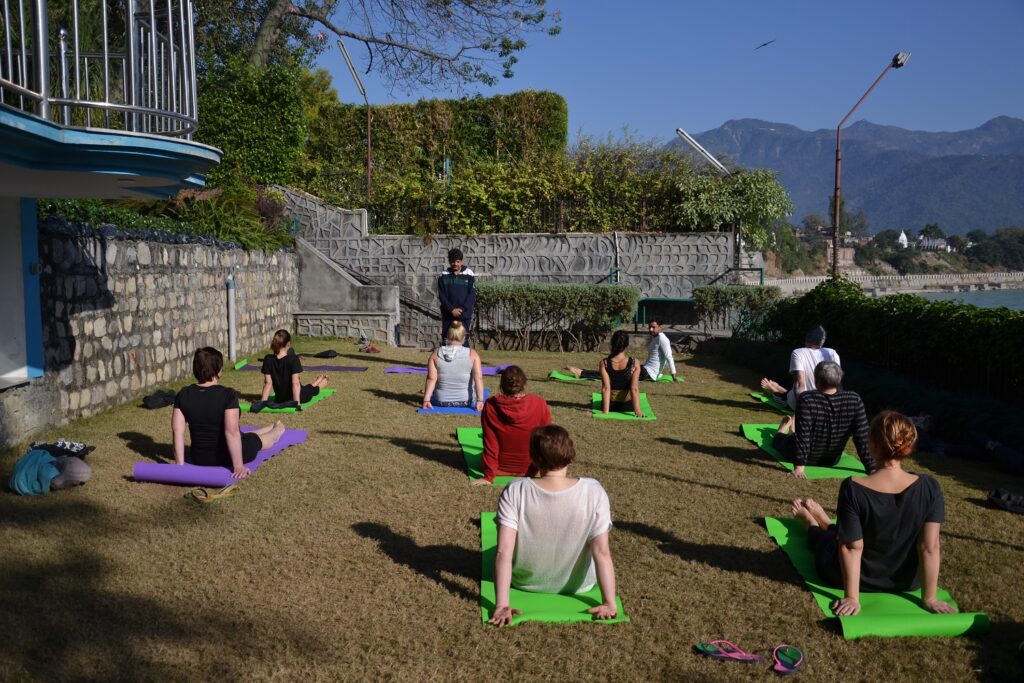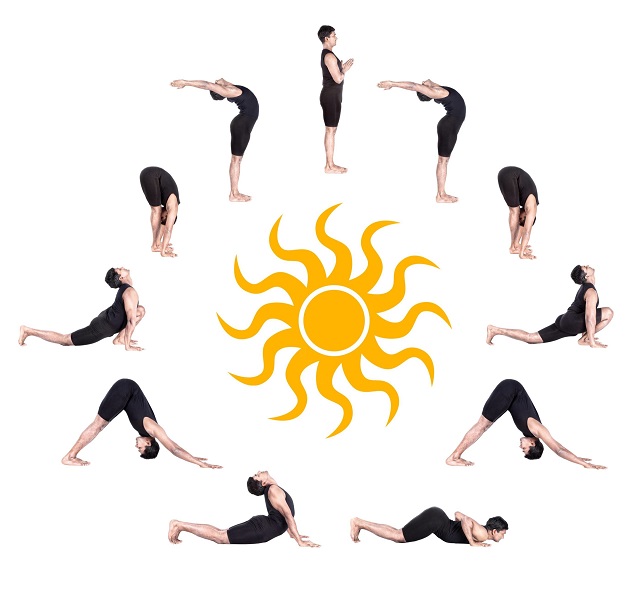| Yoga offers numerous benefits for both the mind and body. Here are some of the key benefits: Physical Benefits Improves Flexibility: Regular yoga practice helps improve flexibility, making it easier to perform daily activities and reducing the risk of injuries. Boosts Circulation: Yoga improves blood circulation, which can help deliver more oxygen to your cells and enhance overall health. Increases Energy: Regular yoga practice can increase your energy levels and reduce feelings of fatigue. Aids in Weight Management: Certain styles of yoga can help burn calories and improve metabolism. Mental and Emotional Benefits Reduces Stress: Yoga helps reduce stress by promoting relaxation and reducing the levels of cortisol, the stress hormone. Promotes Mindfulness: Yoga encourages mindfulness and helps you become more aware of your body, thoughts, and emotions. Supports Emotional Health: Yoga can help manage symptoms of anxiety and depression by promoting relaxation and reducing stress. Other Benefits Improves Sleep Quality: Regular yoga practice can help you fall asleep faster and improve the quality of your sleep. Boosts Immunity: Yoga can enhance the body’s immune system by reducing stress and promoting overall health. Promotes a Healthy Lifestyle: Practicing yoga often encourages healthier lifestyle choices such as better nutrition and regular physical activity. Overall, yoga is a holistic practice that can benefit nearly every aspect of your life, from physical health to mental well-being. |

Importance of Yoga Teacher
Responsibilities
- Instruction: Teaching various yoga poses (asanas), breathing techniques (pranayama), and meditation practices.
- Demonstration: Demonstrating yoga poses and ensuring students perform them correctly and safely.
- Class Planning: Designing class sequences that align with the goals of the practice and the needs of the students.
- Encouragement: Motivating and encouraging students to progress in their practice.
- Safety: Ensuring a safe practice environment and being knowledgeable about how to prevent and handle injuries.
Qualities of a Good Yoga Teacher
- Knowledgeable: Deep understanding of yoga philosophy, anatomy, and various styles of yoga.
- Patient: Patience to work with students at different levels of proficiency.
- Communicative: Clear and effective communication skills to instruct and guide students.
- Inspirational: Ability to inspire and motivate students to continue their practice.
- Professional: Maintaining a professional demeanor and adhering to ethical standards.

Yoga for weight Loss
Yoga can be an effective tool for weight loss when combined with a healthy diet and lifestyle. While it might not burn as many calories as some high-intensity workouts, yoga can help you lose weight by improving your overall fitness, reducing stress, and promoting a balanced lifestyle. Here are some ways yoga can aid in weight loss:
Yoga Styles for Weight Loss
- Vinyasa Yoga: This style involves a dynamic flow of poses with synchronized breathing, providing a cardiovascular workout.
- Power Yoga: A vigorous and fitness-focused approach to yoga that builds strength and burns calories.
- Ashtanga Yoga: A physically demanding practice that involves a set sequence of postures, offering a full-body workout.
- Bikram Yoga: Also known as hot yoga, it involves performing a series of poses in a heated room, promoting sweating and calorie burning.
- Hatha Yoga: While generally slower-paced, it can still help with weight loss by building strength and improving flexibility.
Effective Yoga Poses for Weight Loss
- Sun Salutations (Surya Namaskar): A sequence of poses that warms up the body, improves circulation, and aids in calorie burning.
- Warrior Poses (Virabhadrasana I, II, III): Strengthen the legs, core, and improve balance.
- Boat Pose (Navasana): Engages the core muscles and improves abdominal strength.
- Plank Pose (Phalakasana): Builds upper body and core strength.
- Chair Pose (Utkatasana): Strengthens the thighs, glutes, and core.
- Twists (Ardha Matsyendrasana, Bharadvajasana): Improve digestion and help detoxify the body.
Tips for Using Yoga for Weight Loss
- Practice Regularly: Aim to practice yoga at least 3-5 times a week for the best results.
- Combine with Cardio: Complement your yoga practice with cardiovascular exercises such as walking, running, or cycling.
- Mind Your Diet: Maintain a balanced diet rich in whole foods, lean proteins, and healthy fats.
- Stay Hydrated: Drink plenty of water, especially if you are practicing hot yoga.
- Set Realistic Goals: Be patient and set achievable weight loss goals. Consistency is key.
- Stay Committed: Keep a positive mindset and stay committed to your practice.
Incorporating yoga into your fitness routine can be an enjoyable and holistic approach to achieving and maintaining a healthy weight.

Advantage of Surya namaskar
Surya Namaskar, also known as Sun Salutation, is a sequence of yoga poses performed in a flow. It is a traditional practice that has numerous physical, mental, and spiritual benefits. Here are some of the key advantages of practicing Surya Namaskar:
Physical Benefits
- Full-Body Workout: Surya Namaskar involves a series of 12 poses that engage and stretch different muscle groups, providing a comprehensive workout for the entire body.
- Improves Flexibility: The sequence of poses helps improve flexibility in the spine, hamstrings, shoulders, and other areas.
- Strengthens Muscles and Joints: Regular practice strengthens the muscles and joints, enhancing overall physical strength.
- Enhances Cardiovascular Health: The dynamic flow of Surya Namaskar increases the heart rate, promoting cardiovascular health and improving circulation.
- Aids in Weight Loss: The continuous movement and engagement of multiple muscle groups help burn calories and promote weight loss.
- Improves Digestion: The forward bends and twists in the sequence massage the digestive organs, improving digestion and metabolism.
Mental and Emotional Benefits
- Reduces Stress: The meditative aspect of Surya Namaskar, combined with controlled breathing, helps reduce stress and anxiety.
- Enhances Mental Clarity: The focus required during the practice improves concentration and mental clarity.
- Promotes Emotional Stability: The rhythmic flow and breath control help in balancing emotions and promoting a sense of calm.
- Boosts Mood: The practice releases endorphins, which can elevate mood and promote a sense of well-being.
Spiritual Benefits
- Promotes Mindfulness: Surya Namaskar encourages mindfulness by requiring focus on the breath and movement, fostering a deeper connection with the present moment.
- Balances Energy: The practice is believed to balance the energy centers (chakras) in the body, promoting overall harmony and well-being.
- Enhances Self-Awareness: Regular practice fosters greater self-awareness and a deeper connection with oneself.
Online Yoga Training Courses
If you prefer the flexibility of online learning, We are at Vedic Energy offer online yoga teacher training. These courses often include live sessions, recorded videos, and interactive components to ensure a comprehensive learning experience. you may reach us via email vedicenergy1@gmail.com
Conclusion
Choosing the right yoga training course can be a transformative experience, whether you aim to deepen your personal practice or pursue a career as a yoga instructor. Take the time to research and select a program that aligns with your goals, interests, and lifestyle.
